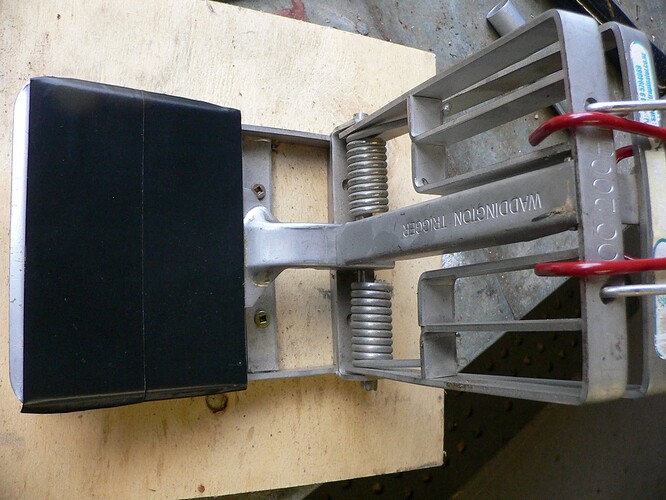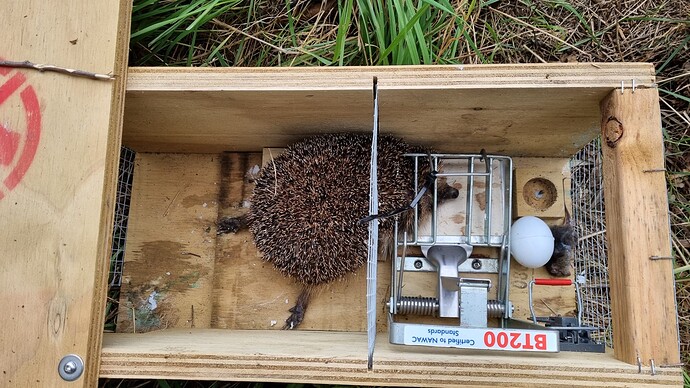Ramps
I’ve had ramps in my DOC tunnels for about 5 years, using rectangular pieces of scrap timber. The kiwi conservancy nearby recommended using them, and they’ve worked really well. I highly recommend adding ramps to your DOC tunnels.
When I’ve used scraps of hard wood (like Matai or Kwila) for ramps, some rats have sharpened their teeth on them. Rat saliva is one of the most potent natural lures for rats (according to a rat behaviour study that I read several years ago), because the smell of another rat’s saliva signals the presence of food that’s safe to eat. Saliva on a ramp might not encourage rats to enter a tunnel, but it should be a good way to lure them to entrances.
Treadles
The main way that I disguise my treadles, is to leave them dirty once the trap has seen some action. Over time, fur, blood, and the remnants of carcasses accumulates, disguising the metal. This is only a thin, light layer that only weighs a few grams, not big chunks of fur. If a treadle needs a tidy up, I use a metal scraper to remove some.
With a brand-new DOC trap, I sprinkle some soil onto the treadle and/or some forest floor debris, like leaves or moss. If the treadle looks and smells like the forest floor, predators should be more comfortable crossing it. I don’t use things that could interfere with treadles, like medium/large feathers, bark and twigs. Another option is to apply 1 or 2 layers of dead leaves that are damp onto a treadle, because they can stick like wallpaper when they dry out. Mahoe leaves work well, because they’re nice and flat, with small stems. Larger, leathery leaves probably won’t stick (Karaka, for example).
I like the idea of using small fern fronds, because they should be easy to remove when they’ve seen too much action, if part of the stalk is attached. A small pair of scissors or a knife would let you shape fronds to size. I’m definitely going to try this when I buy a new trap.
Another natural cover to try would be the fine foliage of Manuka/Kanuka at the end of small stems. Kanuka has softer foliage and stems than Manuka, so that’s what I’d use.
I had contemplated painting the treadles of my traps a matte brown but thought better of it. It would take a lot of time (and money!) to paint them, and I was concerned that the smell of the paint might deter predators.
Regarding cold treadles, a DOC trap could, in theory, be made that has a small in-built heater powered by a battery and/or solar panels, but I’d imagine that this would be both difficult and expensive.
Good luck trapping, everybody.


